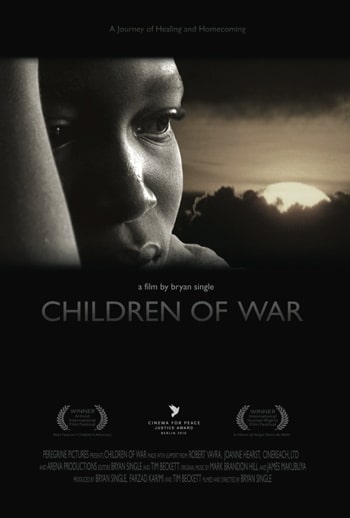Heralded by the International Film Festival and Forum on Human Rights, the Artivist International Film Festival and the Cinema For Peace Justice Award, the film is certainly an emotional journey through the atrocities humanity is capable of inflicting itself in the name of – what else? – peace and justice.
The LRA’s 24-year campaign of terror has not only resulted in a over 100,000 deaths, thousands of maimed and wounded, two million of displaced civilians in refugee camps but also robbed an estimated 35,000 boys and girls of their families, their childhood and their innocence. In early 2006, Jan Egeland, former UN Special Advisor to the Secretary General called the situation in northern Uganda “the world’s greatest neglected humanitarian crisis”.
With the help of a heroic team of trauma counselors, children sometimes no older than six years old confront and break through years of brutal abuse, extreme religious ideology and forced participation in war crimes of an unspeakable nature.
Community, one-on-one counseling sessions and artistic expression, such as painting, singing, meaning-dancing and dramatic role-playing each play an important role in the children’s recovery. But perhaps more powerfully, Children of War also documents the children’s brave attempt to discover and transform their own feelings and ideas about the many layers of their experience as victims and perpetrators of violence through civil debates. Hope and despair, captivity and freedom, hatred and self-love vs. love and self-hatred all hold a significant part of the debate. But the most meaningful debate those children have to face, and the one that elevates this particular narrative above the specifics of Children of War and into the universal realm of trauma recovery is that of Revenge vs. Forgiveness.







